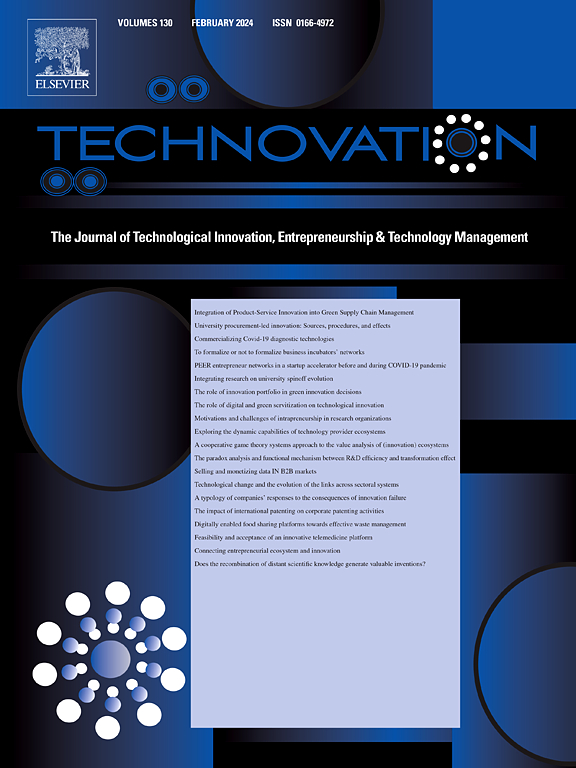Do scientific knowledge flows inspire exploratory innovation? Evidence from US biomedical and life sciences firms
IF 10.9
1区 管理学
Q1 ENGINEERING, INDUSTRIAL
引用次数: 0
Abstract
Exploratory innovation relies heavily on a constant stream of new external knowledge that can be combined and recombined with existing knowledge. Scientific knowledge flows, derived from research articles, provide essential external knowledge elements for exploratory innovation. However, few studies have explored the role of scientific knowledge flows in this context. This study examines how three characteristics of scientific knowledge flows—intensity, breadth, and novelty—impact exploratory innovation, using US biomedical and life sciences firms as the sample. Additionally, we investigate the moderating role of a firm's internal knowledge base diversity in these relationships. Using a novel topic-based content analysis method, Scientific Evolutionary Pathways, we measure the breadth and novelty of scientific knowledge flows. Our results indicate that intensive scientific knowledge flows tend to generate more exploratory innovation, while the breadth and novelty of scientific knowledge flows exhibit inverted U-shaped relationships with exploratory innovation. Furthermore, the diversity of a firm's internal knowledge base negatively moderates the relationship between the intensity of scientific knowledge flows and exploratory innovation and flattens the inverted U-shaped relationships between the breadth and novelty of scientific knowledge flows and exploratory innovation.
科学知识的流动是否激发了探索性创新?来自美国生物医学和生命科学公司的证据
探索性创新在很大程度上依赖于源源不断的外部新知识,这些新知识可以与现有知识进行组合和重组。来源于科研论文的科学知识流为探索性创新提供了必要的外部知识要素。然而,很少有研究探索科学知识流动在这一背景下的作用。本研究以美国生物医学和生命科学公司为样本,探讨了科学知识流动的强度、广度和新颖性这三个特征对探索性创新的影响。此外,我们还研究了企业内部知识库多样性在这些关系中的调节作用。使用一种新颖的基于主题的内容分析方法,科学进化路径,我们测量科学知识流动的广度和新颖性。研究结果表明,密集的科学知识流动倾向于产生更多的探索性创新,而科学知识流动的广度和新颖性与探索性创新呈倒u型关系。此外,企业内部知识库的多样性对科技知识流动强度与探索性创新之间的关系具有负向调节作用,并使科技知识流动广度和新颖性与探索性创新之间的倒u型关系趋于平缓。
本文章由计算机程序翻译,如有差异,请以英文原文为准。
求助全文
约1分钟内获得全文
求助全文
来源期刊

Technovation
管理科学-工程:工业
CiteScore
15.10
自引率
11.20%
发文量
208
审稿时长
91 days
期刊介绍:
The interdisciplinary journal Technovation covers various aspects of technological innovation, exploring processes, products, and social impacts. It examines innovation in both process and product realms, including social innovations like regulatory frameworks and non-economic benefits. Topics range from emerging trends and capital for development to managing technology-intensive ventures and innovation in organizations of different sizes. It also discusses organizational structures, investment strategies for science and technology enterprises, and the roles of technological innovators. Additionally, it addresses technology transfer between developing countries and innovation across enterprise, political, and economic systems.
 求助内容:
求助内容: 应助结果提醒方式:
应助结果提醒方式:


